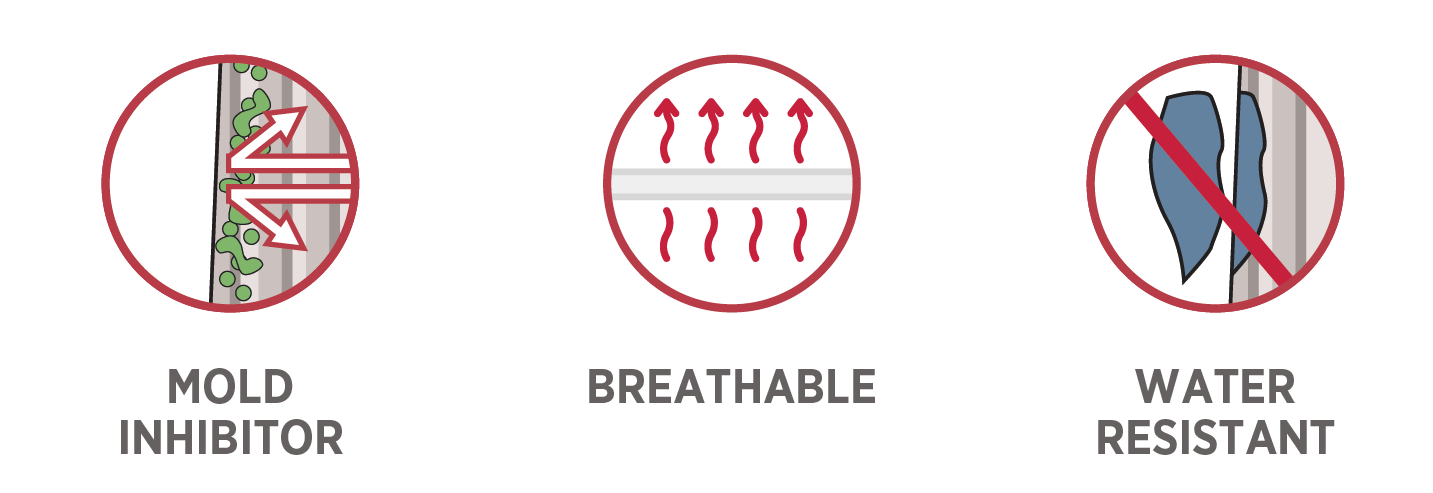However, while these methods may look good on paper, they do present several problems that can hurt the environment, operational costs, and the quality of your cargo.
These drawbacks are why many shippers are turning to the Vdry Liner to improve how they line the shipping container walls and floor.
What Happens When Paper Linings Get Wet?
Have you ever heard the expression “they couldn’t fight their way out of a wet paper bag”?
As trash talk goes it is pretty tame by modern standards. But the implication is clear: when the paper is wet, it breaks and falls apart easily.
This logic applies when using cardboard and paper container liners. When condensation forms, these materials will break and stick to the walls and floor. They can also become moldy.
This all raises the risk of moisture damage to your cargo. It also increases the costs of cleaning out a shipping container as wet pieces of paper need to be removed from the walls during unloading.
The Vdry Liner has a low moisture content which reduces the risk to your goods during shipping.
This combination of high-performance characteristics means that you can quickly convert a dirty container into a food-grade environment.
Higher Risk of Condensation Damage
When you load a shipping container it is full of moisture. This can be found in the air, cargo, and packaging.
This moisture contributes to the condensation cycle inside the shipping container. This means that it evaporates with the warm periods during the day, and when the temperature drops in the evening, it forms condensation on the cool surface of the container ceiling. This leads to moisture damage as drops of condensation fall onto the cargo below.
Because paper and cardboard container liners have a relatively high moisture content, they increase the risk of condensation damage to cargo.
The Vdry Liner has a low moisture content which reduces the risk to your goods during shipping.
Increased Time to Load Container
We all know that wrapping presents at Christmas is a time-consuming task and invariably ends with a lot of gift paper and tape around the room.
This will sound familiar to anyone who lines container walls with paper or cardboard. This can be a lengthy process that involves unrolling various sheets of material and haphazardly sticking them to the walls, which means it takes longer to load a container than it should.
A tailor-designed hanging system means that the Vdry Liner can be installed inside a container by just one person in a couple of minutes. It also does not require any additional tools such as scissors or tape. This all adds up to being able to load more containers in a given period.
Harder to Calculate Container Load Costs and Requirements
The Vdry Liner is packed in such a way that one box of the product is all you need to kit out a container. This means you can accurately plan costs and needs ahead of time. For example, if you’re loading 100 containers in a given month, then ordering 100 boxes of Vdry Liner would suffice.
Compare this with other materials in which it can be hard to calculate exactly how many containers can be treated with a roll of paper or cardboard. These methods can also be wasteful with excess materials cut off and thrown away after loading.
The Environmental Impact of Paper Linings
There is no ignoring the importance of making environmentally-conscious decisions. This includes the choices we make when it comes to choosing a container liner material.
Opting for cardboard or paper has a major impact on the environment. And is contrary to one of the environmental initiatives we are most proud to be a part of – the planting of native trees in the Yungas Tucumanas in Argentina.
The Vdry Liner is manufactured with handpicked recyclable materials, meaning you can rest assured that your container liner materials have a low environmental impact.

